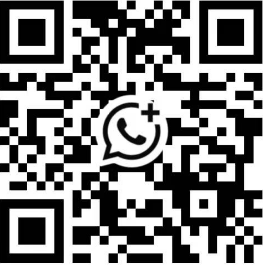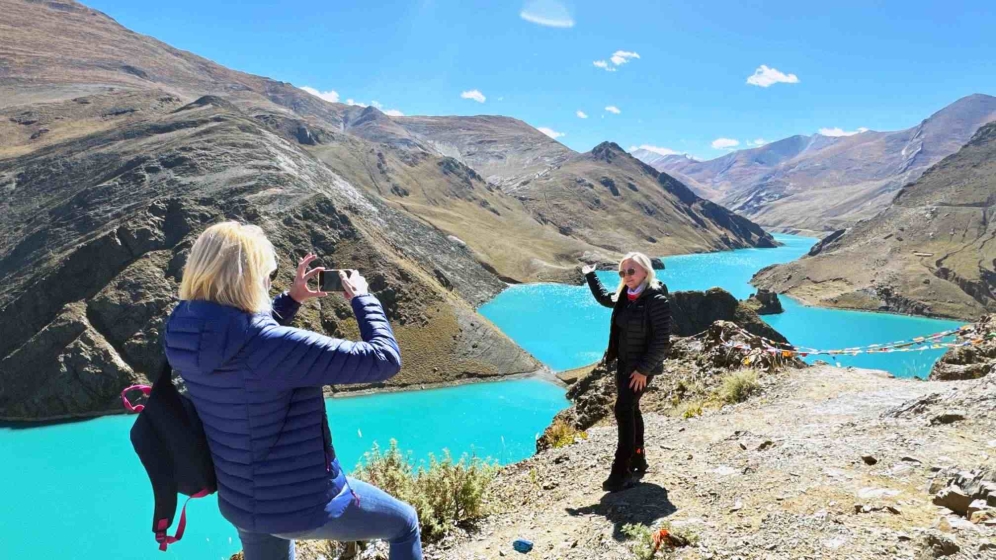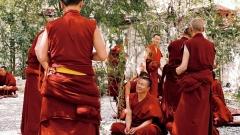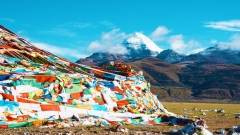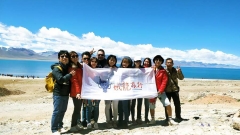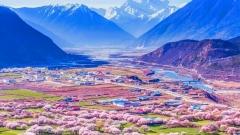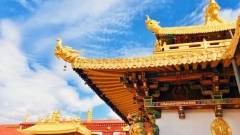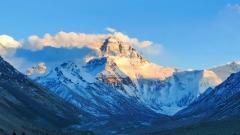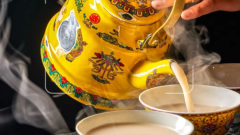Planning a trip to Tibet involves several steps—from confirming you meet health requirements and securing necessary permits, to choosing your travel season and mode of transport. While it may sound complex, breaking the process into nine clear questions will simplify your journey. By the end of this guide, you’ll know exactly how to visit Tibet in 2025, what documents to prepare, where to go, and how China Dragon Travel can tailor your perfect Tibetan adventure.
Can I Visit Tibet? Is There an Age Limit?
Anyone in good physical health can travel to Tibet, regardless of age. The youngest recorded visitors include infants as young as eight months, while octogenarians in their 80s have completed tours without issue—provided they acclimatize properly and follow medical advice.
However, independent travel is not permitted. Every foreign visitor must book a pre‑arranged tour with a licensed Tibet‑based agency and be accompanied by an authorized guide and driver from entry to exit.
Recent safety guidelines suggest extra caution—and even age restrictions—for travelers over 75, as the high altitude can pose serious risks to seniors with underlying health conditions.
Is It Safe to Visit Tibet Nowadays?
Tibet ranks among the safest destinations in China, with low crime rates and welcoming locals. Solo travelers, women, and families alike generally feel secure throughout their journey.
The predominant health concern is altitude sickness, which can affect anyone regardless of fitness level. Individuals with cardiovascular disease, severe asthma, chronic lung conditions, or uncontrolled hypertension are advised against travelling to elevations above 3,000 m without medical clearance.
To mitigate altitude sickness:
- Rest 2–3 nights at a moderate elevation (e.g., Xining at 2,275 m) before ascending to Lhasa (3,650 m).
- Stay well‑hydrated and avoid strenuous activity for the first 48 hours.
- Consult your doctor about prophylactic medications such as Acetazolamide (Diamox) or natural remedies like Rhodiola rosea.
If you experience severe symptoms—persistent headache, nausea, or dizziness—inform your guide immediately and consider descending to a lower altitude.
What Travel Documents Are Required?
To enter Tibet, non‑Chinese passport holders must have:
- A valid passport with at least six months’ validity.
- A Chinese visa, unless your nationality qualifies for the 15‑ or 30‑day visa‑free transit policy.
- A Tibet Travel Permit (TTP) issued by the Tibet Tourism Bureau through a Chinese travel agency.
The TTP covers travel within Lhasa and Nagqu. Visiting other regions (e.g., Mount Kailash, Shigatse) requires an Alien’s Travel Permit (ATP) from local Public Security authorities.
Insider Tips:
- Apply for your TTP 20 days before departure to allow 8–14 business days for processing and delivery to your mainland China hotel.
- Use the same passport for all visa and permit applications; mismatches lead to denial of boarding.
- If entering via Nepal, you’ll need a group Chinese visa in addition to the TTP.
How Much Does It Cost to Visit Tibet?
Tibet tour packages alone range from around US $500 for simple 4‑day group trips to over US $2,500 for private, luxury, or extended pilgrimages. Final cost depends on:
- Duration of stay
- Season (peak vs. off‑peak)
- Destinations (Lhasa only vs. Kailash/Everest)
- Accommodation level (budget guesthouses to 5★ hotels)
- Personal expenses (souvenirs, optional activities)
Joining a small group tour often yields the best value, as you share transportation, guide fees, and lodging costs. Custom private groups of six or more can also unlock group rates.
When Is the Best Time to Visit Tibet?
Tibet’s climate varies greatly by season and altitude, but broadly:
- Spring (April–May) and Autumn (September–October) offer the most pleasant weather: daytime highs of 15–20 °C, minimal rainfall, and clear mountain views. Ideal for Everest Base Camp treks and Kailash kora.
- Summer (June–August) is peak season due to school holidays; temperatures reach 20–23 °C, and afternoon showers are brief. Festivals like Shoton and Saga Dawa occur now.
- Winter (November–February) sees fewer tourists and significant discounts. Daytime highs in Lhasa hover around 10–12 °C, while nights can drop below –10 °C. Snow‑covered palaces and bird‑watching are winter highlights.
How to Get to Tibet: Easiest Routes
From Mainland China
- By Air: Daily flights connect Lhasa Gonggar Airport with Beijing, Shanghai, Chengdu, Chongqing, Xi’an, Guangzhou, and more.
- By Train: The world‑famous Qinghai–Tibet Railway runs from Xining to Lhasa, with direct services from Beijing, Shanghai, Guangzhou, Chengdu, and Chongqing.
- By Road: Four major highways lead to Lhasa—G318 (Sichuan–Tibet), G109 (Qinghai–Tibet), G214 (Yunnan–Tibet), G219 (Xinjiang–Tibet)—perfect for overland adventures.
From Nepal
- By Air: Himalayan Airlines operates Kathmandu–Lhasa flights several times weekly.
- By Road: Overland journeys via the Gyirong border take 8–10 days, often including an Everest Base Camp overnight on the Tibetan side. This epic trek requires careful planning and permits.
Getting Around Inside Tibet
Once in Tibet, private vehicle (bus, 4×4) is the main mode of transport. Road improvements have made self‑drive tours feasible, though high‑altitude driving demands experience. You can also charter motorcycles or e‑bikes for shorter routes around Lhasa or Namtso Lake.
Domestic flights link Lhasa with Shigatse, Nyingchi, and Ngari (far western Tibet), saving long road hours.
What Are the Must‑See Places in Tibet?
- Lhasa (4 days): Potala Palace, Jokhang Temple, Barkhor Street, Sera & Drepung Monasteries.
- Everest Base Camp (8 days from Lhasa): Rongbuk Monastery, the world’s highest monastery, and sunrise/sunset views of Everest.
- Mount Kailash & Lake Manasarovar (10–12 days): Pilgrimage kora, Holiest lakes, and stunning high‑altitude vistas.
- Namtso & Yamdrok Lakes (2 days): Turquoise waters framed by snow peaks and nomadic camps.
- Shigatse & Tashilhunpo Monastery (1–2 days): Historical capital region with Sakya Monastery nearby.
- Trans‑Himalayan Road Trips: Follow G219 to far‑flung western Tibet or combine with Nepal for epic overland journeys.
Tibet Tour FAQs & Insider Tips
- Peak‑Season Booking: Reserve trains/flights 3–4 months ahead for July–August travel.
- Health Checks: Complete an ECG and blood test if you have cardiovascular or blood disorders.
- Festival Dates: Consult the Tibetan lunar calendar for Losar (New Year) and Saga Dawa. Dates vary yearly.
- Gear Up: Pack layers, sunscreen, sunglasses, and a good down jacket—even in summer nights can be freezing.
- Altitude Prep: Consider arriving early in Xining or Golmud for gentle acclimatization.
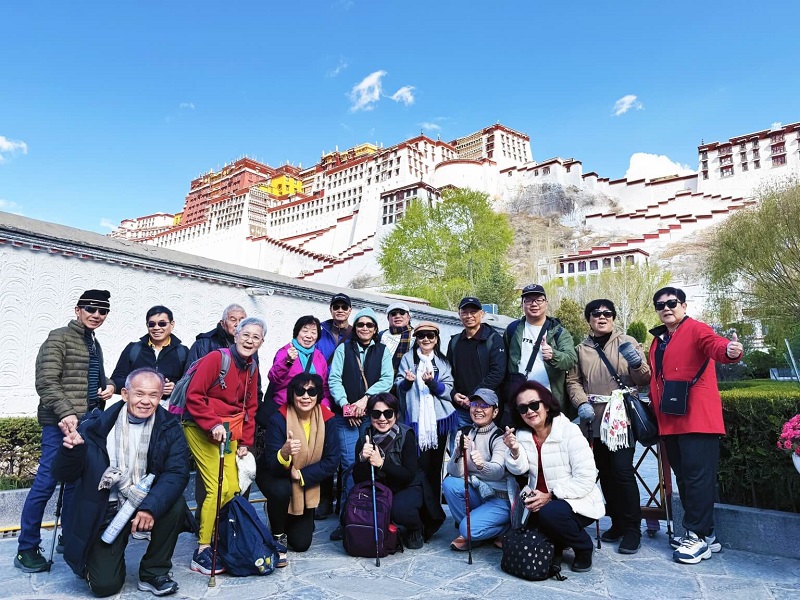
Why Choose China Dragon Travel?
Navigating Tibet’s permit system, altitude challenges, and transportation logistics demands local expertise. China Dragon Travel offers:
- Hassle‑free permit handling (TTP, ATP) with on‑time delivery.
- Customized itineraries matching your interests—be it Everest panoramas, Kailash pilgrimage, or cultural immersion.
- All‑season options, from spring treks to winter birding, with professional guides who prioritize safety and comfort.
Trust China Dragon Travel to turn your vision of the Roof of the World into an unforgettable reality. Contact us today to start planning your 2025 Tibet adventure!


